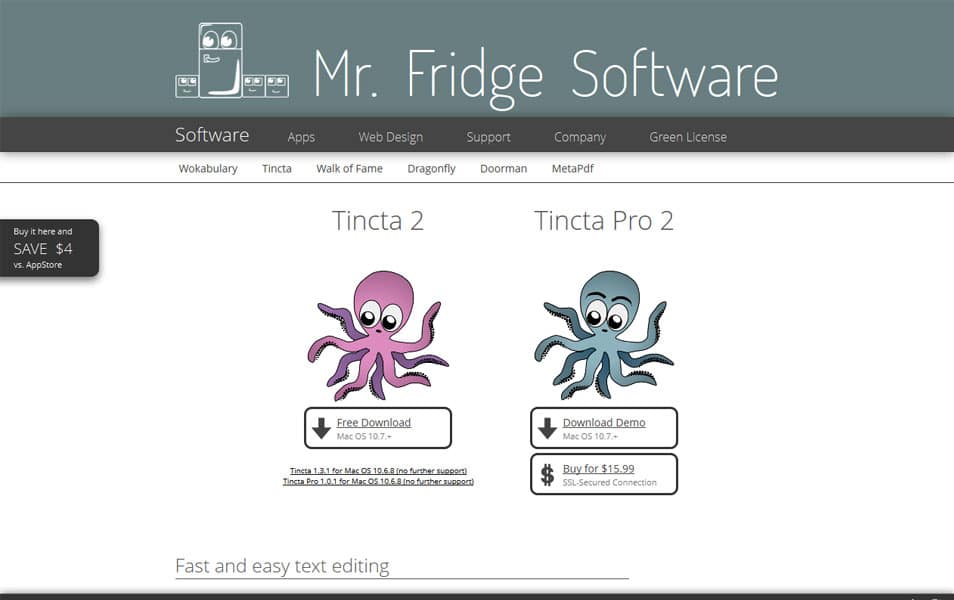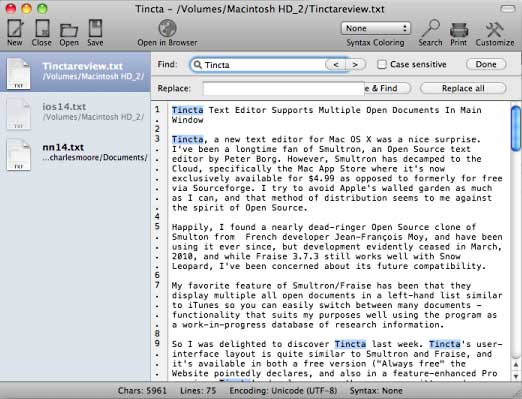
If you are learning a foreign language and want to support development of Tincta, try out Wokabulary - The best flash card app to learn your vocabulary. Maintainance, App Store and website hosting is cross-financed from sales of Coding Friends' other apps. Or you can delete all references to it alltogether and remove the import from Tincta-AppStore-Prefix.pch There is a Sentr圜onfig_Example.h that you can use for your own Sentry account. The private key is defined in the Sentr圜onfig.h which is not included in the source.

#TINCTA FOR WINDOES FREE#
Contributeįeel free to pick any non-assigned issue and open a pull request with a fix. If you encounter any bugs or other issues, please open an issue here on GitHub.
#TINCTA FOR WINDOES PROFESSIONAL#
Tincta comes with all the features you expect from a professional text editor:Īnd lots of useful little details that will make you love it:
#TINCTA FOR WINDOES FOR MAC#
Free text editor for Mac with focus on speed, stability and ease of use. The Chimanimani Mountains: an updated checklist. as Stiburus alopecuroides (Includes a picture). Grasses of South Africa Briza Publications, South Africa. Eragrostis species of Zimbabwe Éditions Quae,Versailles, France Pages 154 - 155. A checklist of Zimbabwean vascular plants Southern African Botanical Diversity Network Report No.

Poaceae Flora Zambesiaca 10(2) Pages 122 - 124.

A checklist of Zimbabwean grasses Southern African Botanical Diversity Network Report No. In montane grassland, usually in wet places such as vleis and seepage zones.Įastern Zimbabwe, Eswatini, South Africa.Ĭhapano, C. Spikelets dark purple, with whitish hairs. Leaves linear, covered in white, glandular hairs. 45°, those in opposite rows not imbricate, the rhachilla visible between them, brownish, purple or blackish, densely silky-pilose, acuminate at the apex palea persistent, with a tuft of hairs on the back between the keels, the keels slender, wingless, scaberulous anthers 3, 0.9–1.2 mm long.Caryopsis 1.5–2 mm long, oblong-elliptic.

Detailed records: Display species records QDS maps by: Google Maps Point records by Google Maps Species details: Click on each item to see an explanation of that item (Note: opens a new window) Synonyms:ĭensely caespitose perennial without rhizomes or stolons culms up to 60 cm tall, erect, usually unbranched, glabrous at the nodes (but sometimes pilose on the internodes), eglandular basal leaf sheaths glabrous, chartaceous, ± terete, eglandular, persistent ligule a line of hairs leaf laminas (5)9–30 cm × 1–2 mm, very narrowly linear to setaceous, straight, curved or coiled, usually involute, softly pilose, eglandular.Panicle (2)3–8(10.5) cm long, cylindrical, dense and compact or rarely interrupted, the spikelets subsessile, the primary branches not in whorls, terminating in a fertile spikelet, glabrous in the axils, eglandular.Spikelets (2.7)3–4.5 × 1.6–4.6 mm, broadly ovate to ovate-elliptic, laterally compressed, (2)3–6-flowered, the lemmas disarticulating from below upwards but the rhachilla very fragile and usually breaking off above the glumes as the spikelet matures glumes subequal, 2.3–3.6 mm long, reaching to 2/3 the way along the adjacent lemmas, sometimes reaching almost to the apex, keeled, lanceolate in profile, softly pilose, acuminate or rarely acute at the apex lemmas 3.3–4.1 mm long, keeled, lanceolate in profile, membranous with distinct lateral nerves, diverging from the rhachilla at c.


 0 kommentar(er)
0 kommentar(er)
